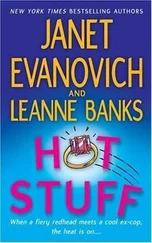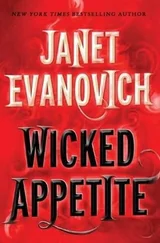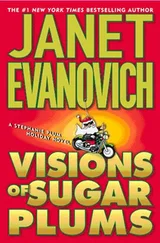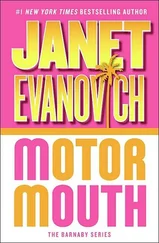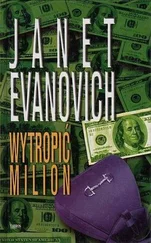Janet Evanovich - Wicked Business
Здесь есть возможность читать онлайн «Janet Evanovich - Wicked Business» весь текст электронной книги совершенно бесплатно (целиком полную версию без сокращений). В некоторых случаях можно слушать аудио, скачать через торрент в формате fb2 и присутствует краткое содержание. Жанр: Детектив, на английском языке. Описание произведения, (предисловие) а так же отзывы посетителей доступны на портале библиотеки ЛибКат.
- Название:Wicked Business
- Автор:
- Жанр:
- Год:неизвестен
- ISBN:нет данных
- Рейтинг книги:3 / 5. Голосов: 1
-
Избранное:Добавить в избранное
- Отзывы:
-
Ваша оценка:
- 60
- 1
- 2
- 3
- 4
- 5
Wicked Business: краткое содержание, описание и аннотация
Предлагаем к чтению аннотацию, описание, краткое содержание или предисловие (зависит от того, что написал сам автор книги «Wicked Business»). Если вы не нашли необходимую информацию о книге — напишите в комментариях, мы постараемся отыскать её.
Wicked Business — читать онлайн бесплатно полную книгу (весь текст) целиком
Ниже представлен текст книги, разбитый по страницам. Система сохранения места последней прочитанной страницы, позволяет с удобством читать онлайн бесплатно книгу «Wicked Business», без необходимости каждый раз заново искать на чём Вы остановились. Поставьте закладку, и сможете в любой момент перейти на страницу, на которой закончили чтение.
Интервал:
Закладка:
“I did some research while you were serving,” Diesel said. “The shadow on Joy Street is for the most part thrown by the dome in the front of the building, so I think we should start by looking at the dome. It sits over the Senate Chamber on the third floor.”
We took the elevator to the third floor and Diesel led us into the Senate Chamber. The Chamber walls were painted brick and there were busts of famous people stuck in niches. Above this, on the fourth floor, was gallery seating. And above everything was the dome, decorated in a sort of star-burst pattern with an elaborate wrought-iron chandelier hanging from the middle of it.
We walked around the room, reading plaques and examining the sculptures. We looked up at the dome. No frescoes. Very simple artwork.
“There’s a cupola on the top of the dome,” Diesel said. “There has to be a way to get up there. Usually, there are steps winding up. I’ve been to the top of lots of domes in Europe. Usually, the steps wind along an interior wall. In this case, what we’re seeing must be a false ceiling and not actually the skin of the dome.”
I didn’t consider this to be good news. I was a little claustrophobic, and I didn’t like heights all that much, either.
We went up to the fourth floor and walked through the gallery areas. We looked down at the Senate seating. We looked up at the dome.
“This is dumb,” Morty said. “You don’t know what the heck you’re even looking for. I could have stayed at the party and bent spoons.”
“Jeez Louise,” I said. “Will you give us a break with the spoons already?”
“You’re getting a little snippy, missy,” Morty said. He looked at Diesel. “That’s what happens when they don’t get enough satisfaction, if you know what I mean.”
“Hey, I’m doing my best,” Diesel said, “but she has issues.”
“I do not have issues,” I said. “You’re the one with the issues. You’re the one who has to save the world. Am I all that hot on saving the world? No, but I’m being a good sport about it. You could at least recognize that. You could say, Wow, Lizzy, thanks for helping me out .”
“Maybe it’s that time of the month,” Morty said.
“Hold me back,” I said to Diesel. “I’m going to kill him.”
“What else?” Diesel asked me.
“What do you mean?”
“What else is bothering you?”
“I don’t want to go up in the dome.”
“Now we’re getting somewhere,” Diesel said.
“So I don’t have to go up?”
“Yeah, you still have to go up, but you can whimper like a little girl if you want.”
I left the gallery and walked the hall that ran around the outside of the room. There were windows looking out on Boston, and between the windows were murals. Some of the murals were of farm scenes. Some were military, showing battles of the Revolution. Some were of statesmen. They all had appropriate quotes written in fancy script worked into the art. I stopped to look at a mural depicting a farm scene, and the quote took my breath away. Sometimes too hot the eye of heaven shines .
Holy cow. It was the line from Reedy’s Shakespeare anthology.
CHAPTER EIGHTEEN
I peered out the window that was next to the Shakespeare quote, and I looked down on Joy Street. Diesel walked over and stood next to me.
“Boston looks nice from up here,” he said. “This is my favorite American city.”
“I’m surprised you don’t live here. Why did you choose to live in Marblehead?”
“I had to be near you.”
It was the second time in the last two minutes I went breathless. When I get up in the morning, I try not to focus on the possibility that I’m one of two people on this earth with the ability to recognize an object that might make everyone’s life a misery. Truth is, a lot of the time when I’m tagging along with Diesel I’m feeling like Alice when she fell down the rabbit hole-that I’m in an insanely weird dream, and I’ll wake up at any moment and everything will be normal again.
And then there are times like this, when I’m reminded that I’ve been assigned a protector, and the magnitude of my responsibility sinks in.
“I found the clue,” I said to Diesel. “It’s painted into this mural.”
He draped an arm around me and read the quote attributed to Shakespeare. “Good job. There’s a sun in it, too. The hot eye of heaven. And it’s shining down on the farmer’s fields.”
“This mural is a mosaic,” Marty said, leaning close to the mural, examining the surface. “Inside the sun is a piece of tile shaped like a key.”
Diesel took the Lovey key out of his pocket and placed it over the mosaic key. It was a perfect fit, and a number appeared in the farmhouse. The number was followed by a capital J .
“This could all be a colossal nineteenth-century joke,” I said. “An endless scavenger hunt that goes nowhere.”
I heard the elevator doors open, and a security guard walked our way.
“No one is supposed to be in this part of the building,” he said.
“Sorry,” I said. “We didn’t realize. We had a free moment and I guess we got carried away. We’ve never been in the State House before, and it’s really interesting.”
“If you come back during the week, you can take a tour,” the guard said. “I’m going to have to ask you to go back to the Great Hall now.”
“We should be getting back anyway,” I said. “Our break time is over.”
Diesel pocketed the key. We took the elevator to the second floor and went back to the reception. The guests were still seated. Chamber music could faintly be heard over the crush of conversation.
“Watch this,” Morty said. “I could do it with my eyes closed.”
A cheer went up from across the room.
“I got one!” someone yelled.
“Am I good or what?” Morty said.
We went down to the employee locker room, changed back into our own clothes, and left through a door that led to Hancock Street. We walked Hancock to Mt. Vernon, and Mt. Vernon to Joy. The house number that appeared on the mosaic was on the first block between Beacon and Mt. Vernon. We stood on the sidewalk and stared at the redbrick town house. Four floors, plus a garden level. Not in terrible condition, but not newly renovated, either.
There weren’t any lights on in the house. Either no one was home, or else someone went to bed early. It was too dark to read the bronze plaque by the door.
“It must be a historic house,” Morty said. “They always have plaques on them like that.”
Curiosity got the better of me, and I crept up the steps to the small front stoop to better see the writing on the plaque.
“It says this is a historic house designed by William Butterfield in 1880,” I whispered. “Its name is The Key House, after its first occupant, Malcom Key.”
I touched the plaque with my fingertip and felt the trapped energy. “It’s the plaque,” I said, motioning Diesel to come take a look. “I can feel the energy.”
Diesel examined the plaque and felt around the edges. “I can’t just remove it,” he said. “It’s cemented into the brick.”
“I’m hungry,” Morty said. “I had some of them hors d’oeuvres, but I never got my baloney sandwich.”
Diesel looked at his watch. “I’m supposed to hand you over to your son in a half hour. Let’s go back to the car, and I’ll figure this out later.”
We walked to the car, and Diesel drove to Beacon and double-parked in front of a small grocery store. I ran in and got Morty a loaf of worthless white bread, half a pound of baloney, and a bag of chips, and I was back before the police spotted our illegally parked car.
Diesel skirted the Public Garden and pulled in behind the Four Seasons Hotel. Morty’s son was already there.
Читать дальшеИнтервал:
Закладка:
Похожие книги на «Wicked Business»
Представляем Вашему вниманию похожие книги на «Wicked Business» списком для выбора. Мы отобрали схожую по названию и смыслу литературу в надежде предоставить читателям больше вариантов отыскать новые, интересные, ещё непрочитанные произведения.
Обсуждение, отзывы о книге «Wicked Business» и просто собственные мнения читателей. Оставьте ваши комментарии, напишите, что Вы думаете о произведении, его смысле или главных героях. Укажите что конкретно понравилось, а что нет, и почему Вы так считаете.

